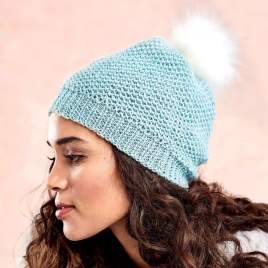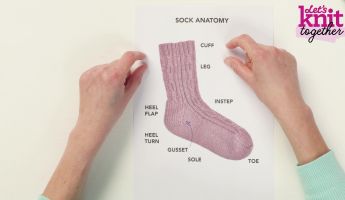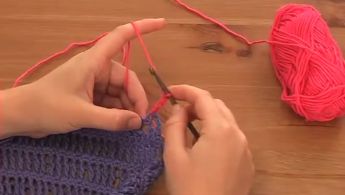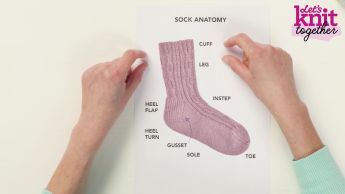How To Work Brioche Stitch
video by
Neti Love & Julie Peasgood
- Overview
- Practical Guides
This is a traditional stitch that has gained in popularity in recent times as makes for very cosy accessories and is reversible, so from a visual point of view, there is no ‘bad’ side. It is created with a simple combination of stitches that produces a rib with deep gullies that is oh-so-snuggly, and lies nice and flat, all by itself.
Being an established stitch there are several variations, and this easy version begins with a set-up row, followed by a one-row repeat, so you could knit yourself a beautiful scarf just with this one row. After the cast on, a set up row is worked that when you look at the stitches on your needle, you’ll see single stitches alternated with a pair of stitches that look crossed, and these will be knitted together.
To cast on
Using your main colour, make a slip knot leaving a 30cm tail and place this on a project needle in your right hand. Hold the working yarn (attached to ball) out of the way in your right hand. Hold the long tail in the fingers of your left hand, and take the thumb behind the strand and tension it. Insert the tip of the needle insert under the strand to put a loop on the needle. Next, wrap the working yarn from back to front over the needle and use your left thumb to slip the tail loop over and off the needle. Pull the tail end to tighten the stitch on the needle, then reposition the tail over your thumb to cast on the next stitch. Repeat to cast on the number of stitches according to your pattern, counting the slip knot counts as one stitch. In this version, we start and finish each row with a knit st a selvedge stitch, so not part of the pattern repeat.
Below is the sample pattern worked on ten cast-on stitches as in the video, with some handy tips afterward. The pattern doesn’t emerge for a few rows, but you’ll soon see why you need that stretchy cast on.
Sample pattern
Using the long tail thumb cast-on method, cast on ten sts
Set-up row: wyib sl 1 pwise, *yfwd, wyif sl 1 pwise, k1, rep from * to last st, k1
Row 1: wyib sl 1, *yfwd, sl 1 pwise (wyif), k2tog, rep from * to last st, k1
Cast off knitwise, working k2tog for the pair of crossed stitches before casting these off.
Guidelines
If you lose track, these useful tips will guide you as to the next step.
- Always slip the first stitch purlwise but with the yarn at the back
- Work a yarn forward before a single stitch
- Always knit the crossed pair of stitches together
- Always knit the last stitch
TIP: some patterns use the abbreviation BRK (pronounced ‘bark’) to indicate a brioche stitch










































